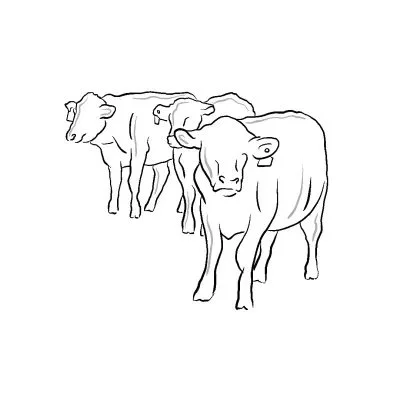27: Unlikely Heroes: Cows, Trees and Grass
USA
A Climate Pollinator story by Sierra Ross Richer
At Restoration Farm in South Bend, Indiana, USA, cows are building soil and sequestering carbon.
Wait, cows? The notorious greenhouse gas machines?
According to Drawdown: The Most Comprehensive Plan Ever Proposed to Reverse Global Warming published in 2017, livestock are responsible for about a fifth of global greenhouse gas emissions. This comes from the methane they emit, as well as deforestation for pasture land. But raised in a silvopasture system, cows become a powerful tool for mitigating climate change.
John and Danile Martens, who live at Restoration farm along with two other families, began experimenting with raising cattle years ago.
They spread hay seeds on barren farmland and introduced a small herd of cattle, which they moved around every day or so.
The first year, there were a lot of weeds: ragweed, burdock, jimsonweed and pigweed. But, John said, “as the cattle grazed, soon we had grass and clover and red clover.”
“They make their own pasture, the cattle do,” Danile said. “To me it’s like a magical system.”
When managed using a rotational grazing method, cattle help to build soil by aerating the land with their hooves, providing fertilizer and managing grassland species by mowing back vegetation.
Now the couple is going a step further: they’re adding trees to the mix.
By combining cattle, grasses and trees to create a silvopasture system, Danile said, “We’re maximizing the carbon sequestration potential.”
With an annual sequestration rate of 1.9 tons of carbon per acre, silvopasture is ranked as the 9th most effective solution for reversing global warming by Drawdown.
What makes it so effective? It’s the way the cattle, grasses and trees work together.
The trees provide added forage for the cattle, fertilize the soil with nutrients brought up from deep in the ground and create a moister, cooler microclimate by providing shade and blocking the wind.
In contrast to conventional cattle grazing which degrades the land and uses up resources, Drawdown says that silviculture farmers “find themselves with healthier, more productive land over time.”
The old orchard that John and Danile have turned into a savannah-like ecosystem, produces not only high quality beef, but possibly more important, new, healthy soil.
“Soil is this living thing that we’ve been doing our best to kill in conventional agriculture,” John said. “With grazing, you can very rapidly restore that synergistic process.”


